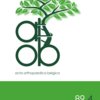Observation of the short-term curative effect of using SuperPATH approach to treat elderly femoral neck fractures with schizophrenia
Total hip arthroplasty, SuperPATH approach, schizophrenia, short-term curative effect
Published online: Jan 08 2024
Abstract
As China enters an aging society, the incidence of femoral neck fractures is increasing year by year. For some patients, total hip arthroplasty (THA) is the treatment of choice for displaced femoral neck fractures. Schizophrenia is a common combination of elderly patients with femoral neck fractures, and there are few reports on the treatment. This study describes the short-term efficacy of the supercapsular percutaneously assisted (SuperPATH) approach in the treatment of patients suffered with displaced femoral neck fractures combined with schizophrenia. A retrospective analysis of 20 elderly patients with displaced femoral neck fractures combined with schizophrenia who underwent THA using the SuperPATH approach. Record demographic data, postoperative reexamination of X-ray film to observe the position and the loosening condition of the prosthesis, the length of hospitalization, complications in the hospital and after discharge. The Harris score of hip joint function was used to evaluate postoperative hip joint function. The average age of the 20 patients was 73.1 years. All patients were followed up by outpatient clinic or telephone. The follow-up time was 3-12 months, with an average of 9.2 months. There was no incision infection, no tissue structure damage such as important nerves and blood vessels, and no complications such as early dislocation, loosening of the joint prosthesis, and deep vein thrombosis of lower extremities. The efficacy of the last follow-up was evaluated according to the Harris score of hip joint function: an average of 91 points (78-98 points); 13 cases were excellent, 5 cases were good, and 2 cases were fair. The SuperPATH approach has the advantages of less surgical damage, shorter recovery time, good surgical safety, preserving the normal tension of the muscles around the hip joint, and reducing the incidence rate of early postoperative dislocation of the joint prosthesis. The THA of the SuperPATH approach can treat patients with displaced femoral neck fractures combined with schizophrenia safely and effectively.
